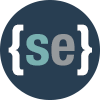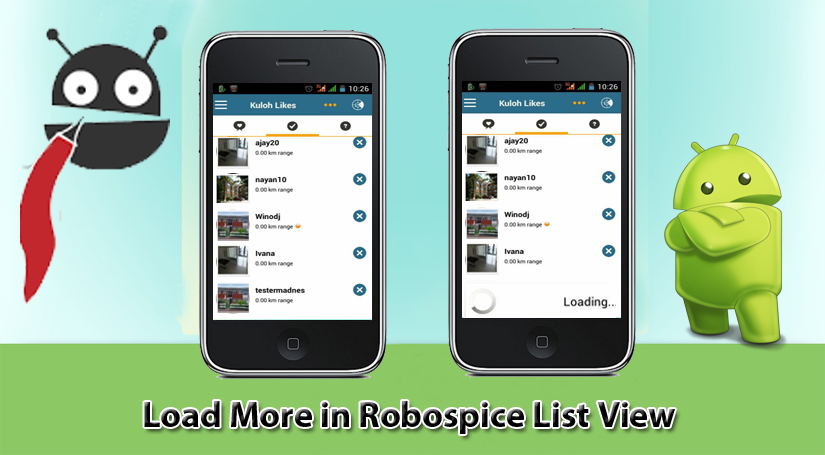iOS market is growing day by day. iOS has a vibrant and strong ecosystem of open source iOS libraries that developers can freely use in their own apps. Open source libraries can save you a lot of time and hassle. Services like GitHub or Bitbucket are full of useful iOS libraries that can be easily integrated into your project by using tools like CocoaPods and Carthage. Here we explain the top iOS libraries that will make your app more attractive.
Top iOS libraries every iOS Developer should use
1. Networking
- Alamofire : Alamofire is an HTTP networking library written in Swift. Alamofire is no longer supported on iOS 7 due to the lack of support for frameworks. Without frameworks, running Travis-CI against iOS 7 would require a second duplicated test target.
- ASIHTTPRequest : ASIHTTPRequest is an easy to use wrapper around the CFNetwork API that makes some of the more tedious aspects of communicating with web servers easier. It is written in Objective-C and works in both Mac OS X and iPhone applications.
- AFNetworking : AFNetworking is a delightful networking library for iOS and Mac OS X. It’s built on top of the Foundation URL Loading System, extending the powerful high-level networking abstractions built into Cocoa. It has a modular architecture with well-designed, feature-rich APIs that are a joy to use.
2. Image Loader
- Kingfisher : Kingfisher is a lightweight and pure Swift implemented library for downloading and caching image from the web. Everything in Kingfisher is asynchronous, not only downloading, but also caching. That means you never need to worry about blocking your UI thread.
- GPU Image : The GPUImage framework is a BSD-licensed iOS library that lets you apply GPU-accelerated filters and other effects to images, live camera video, and movies. In comparison to Core Image (part of iOS 5.0), GPUImage allows you to write your own custom filters, supports deployment to iOS 4.0, and has a simpler interface.
- AsyncImageView : AsyncImageView includes both a simple category on UIImageView for loading and displaying images asynchronously on iOS so that they do not lock up the UI, and a UIImageView subclass for more advanced features.
3. JSON
- SwiftyJSON : SwiftyJSON makes it easy to deal with JSON data in Swift. Swift is very strict about types.
- TouchJSON : TouchJSON is an Objective-C based parser and generator for JSON encoded data. TouchJSON compiles for Mac OS X and iOS devices (currently iPhone, iPad and iPod Touch).
- JASON : JSON parsing with outstanding performances and convenient operators. It is very fast, fully tested, fully documented and Support for iOS, OSX, tvOS, watchOS.
4. Layout
- PureLayout : PureLayout is a cross-platform Objective-C library that works (and looks!) great in Swift. It is fully backwards-compatible with all versions of iOS and OS X that support Auto Layout.
- LayoutKit : LayoutKit is a fast view layout library for iOS. LayoutKit also provides benefits like UIKit friendly, Internationalization and fully tested library.
- SwiftBond : Bond is a Swift binding framework that takes binding concepts to a whole new level. It’s simple, powerful, type-safe and multi-paradigm – just like Swift.
5. Cache
- HanekeSwift : Haneke is a lightweight generic cache for iOS and tvOS written in Swift 2.0. It’s designed to be super-simple to use.
- YYCache : High performance cache framework for iOS. Objects can be evicted with least-recently-used algorithm. Cache limitation can be controlled with count, cost, age and free space.
- Track : Track is a thread safe cache write by Swift. Composed of DiskCache and MemoryCache which support LRU. Implement by linkedlist, it`s fast. You can manage a cache through functions to limit size, age of entries and memory usage to eliminate least recently used object.
6. Testing
- Kiwi : Kiwi is a Behavior Driven Development library for iOS development. The goal is to provide a BDD library that is exquisitely simple to setup and use.
- XcodeCoverage : XcodeCoverage provides a simple way to generate reports of the code coverage of your Xcode project. Generated reports include HTML and Cobertura XML.
- Switchboard : Switchboard is a simple way to remote control your mobile application even after you shipped it to your users’ devices. Use switchboard to Stage-rollout new features to users.
7. Database
- Realm : Realm is a mobile database that runs directly inside phones, tablets or wearables. This repository holds the source code for the iOS, OS X, watchOS & tvOS versions of Realm Swift & Realm Objective-C.
- YapDatabase : YapDatabase is an extensible database for iOS & Mac. It is a “key/value store and MUCH MORE” built atop sqlite for iOS & Mac.
- SwiftData : Working with SQLite is a pain in Swift – that’s where SwiftData comes in. SwiftData is a simple and effective wrapper around the SQLite3 C API written completely in Swift.
- OHMySQL : You can connect to your remote MySQL database using OHMySQL API. It allows you doing queries in easy and object-oriented way. Common queries such as SELECT, INSERT, DELETE, JOIN are wrapped by Objective-C code and you don’t need to dive into MySQL C API.
8. Payments
- PayPal : The PayPal iOS SDK makes it easy to add PayPal and credit card payments to mobile apps. The SDK supports two use cases for making payments – Single Payment and Future Payments – and a third use case for obtaining information about the customer – Profile Sharing.
- Caishen : Caishen provides an easy-to-use text field to ask users for payment card information and to validate the input. It serves a similar purpose as PaymentKit, but is developed as a standalone framework entirely written in Swift. Caishen also allows an easy integration with other third-party frameworks, such as CardIO.
9. Menu
- ENSwiftSideMenu : A lightweight flyover side menu component for iOS with the UIDynamic’s bouncing animation, UIGestures and UIBlurEffect. Allows you to use native UINavigationController’s logic to manage view controllers. The component is written in Swift.
- Swift-Slide-Menu : A Slide Menu, written in Swift 2, inspired by Navigation Drawer on Material Design (inspired by Google Material Design) for iOS written in Swift 2.0
- IGCMenu : IGCMenu library gives easy way to create Grid and Circular menu in app. This is light weight and highly customisable menu.Support iOS 7 and above.
- FrostedSidebar : Hamburger Menu using Swift and iOS 8 API’s. This implementation uses iOS 8’s new UIVisualEffectView to apply the blur to the sidebar. Among other changes, this sidebar has a view that dims the background to shift the focus to the presented content.
These are list of iOS libraries that every developer should use in their app to make the app attractive. All these iOS libraries are very helpful to make the iOS developer’s life easy.
Conclusion
Technology has afforded many individuals the opportunity of owning a mobile phone. These iOS libraries helps you to make the best UI for your app. These iOS libraries make your app attractive, smooth, reliable.
There are various native e-commerce and Social Network mobile apps available in the market for example SocialAPI, MagentoShop – Shopping App, True Friends etc that use these iOS libraries and looking good.
 SocialAPI
SocialAPI
Looking for a native Social Engine app builder (iOS/Android) for your Social Community? Try the 30-day free trial of our SocialaPI mobile app, go mobile commerce in a few hours and increase your connection. No Setup Fee, Pay as you go pack at just $60/month.

MagentoShop
Looking for a native Magento mobile app builder (iOS/Android) for your Magento based online marketplace? Try the 30-day free trial of our Magento mobile app, go mobile commerce in a few hours and increase your sales exponentially. No Setup Fee, Pay as you go pack at just $69/month.
 True Friends
True Friends
Create groups of friends like college buddies, office friends and more. When you are part of a group created by a friend, you can also discuss with other group members about the gift, where to party etc! You can easily add your close friends – invite them through sms, whats app, viber etc.


